Tankless, or on-demand, water heaters are compact, energy-efficient, almost maintenance-free, and reliable.
Now that you have invested in one, you’ll want to keep it in tip-top condition.
Tankless water heaters do require very basic maintenance, and we’ll show you what that entails in this article.
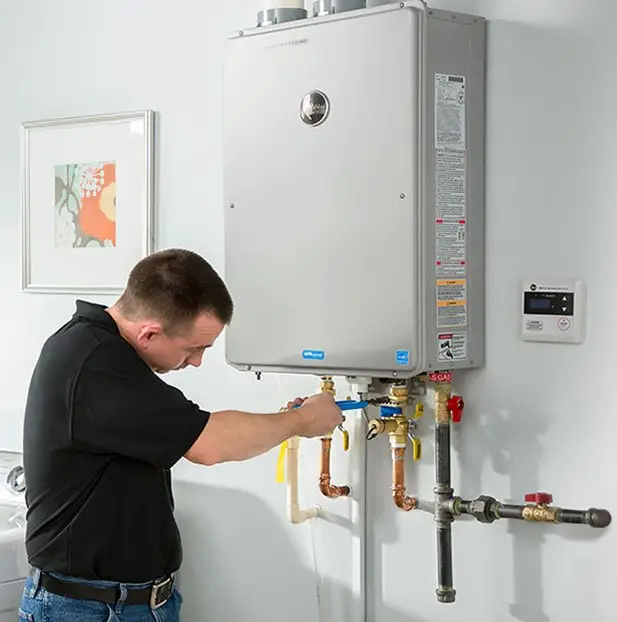
Do Tankless Water Heaters Need Maintenance?
While tankless water heaters are marketed as maintenance-free, there is a small amount of basic maintenance required to ensure your unit achieves its maximum lifespan.
The biggest enemy of any appliance that operates with domestic water is the build-up of minerals on the surfaces where the water comes into contact, particularly heated surfaces.
All domestic water supply carries minerals to some degree, and where this concentration of minerals is higher, the water is classed as “hard water.”

These are normally calcium and magnesium particles that bond themselves to the elements of your appliance over time. The easiest place to notice this would be your kitchen kettle. Take a look at the element. Do you see the dullness on it? That’s mineral build-up.
Firstly, those deposits will certainly reduce the efficiency of the heating element, as a lot of the heat radiated is being absorbed by this deposit.
In the case of your kettle, this means it will take longer to boil the water, which in turn relates to higher energy consumption. The same will be happening inside your water heater. So you can see immediately that there’s a cost implication if those deposits are allowed to build up. The life of your element will also be reduced.
Tankless Water Heater Maintenance
Maintenance of your tankless water heater isn’t an arduous affair and only needs to be done periodically, depending on the quality of the water in your location. We would recommend doing maintenance every six months for a hard water environment and as infrequent as annually for gentle water.
|
Tip |
Helps With |
|---|---|
|
Flush the system |
Removal of deposits in the system |
|
Clean the air filter |
Better air intake |
|
Clean the in-line water filter |
It keeps the sediment from entering the system |
|
Descaling process |
Clearing out scale build-up |
|
Schedule professional service |
Peace of mind |
How Do You Maintain a Tankless Water Heater?
You can either hire a professional to do this or carry out the work yourself. Always refer to your owner’s manual to ensure the correct procedure is followed for that model.
Flush the System
Supplies Needed and Difficulty Level
You’ll need a descaling kit, comprising a circulating pump with connecting hoses, approximately 20 liters of descaling agent mixture, spanners, and thread tape. The difficulty level is intermediate.
Time and Frequency Required
This operation should take from one to two hours. It should be carried out at least annually or more frequently in hard water conditions.
How to Perform This Task
Firstly, ensure that the unit is turned off at the electrical board. Isolate the main water feed to the heater and, if possible, from it too. Remove the main water inlet and outlet pipes, and plug the ends. If your heater is fitted with purge valves, set these to block off the water supply.
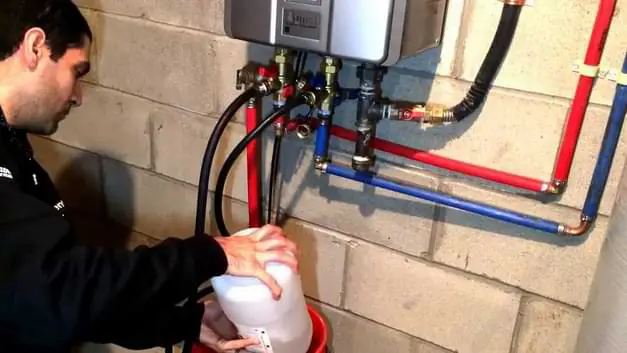
You’ll need a mixture of white vinegar and water, or you can purchase ready mixed descaling liquid. You’ll need a sump pump or circulating pump to flush the heater. Attach hoses to the inlet and outlet of the unit, running to and from the pump. Circulate the flushing liquid through the heater several times until the scale has been removed from the pipes.
After flushing with the descaling fluid, rinse the system with clean, warm water. Once you are satisfied that the system is clean, remove the hoses and reconnect, or de-isolate the supply hoses.
Clean the Air Filter
Supplies Needed and Difficulty Level
You’ll need a screwdriver, soft brush, cloth, and soapy water. This is an easy task.
Time and Frequency Required
This should take no more than 30 minutes to complete and should be done at least every time the unit is descaled. In a dustier environment, you should be cleaning the filter more frequently.
How to Perform This Task
Identify the location of your air filter. Remove the filter cover. Carefully remove the filter element, and soak in warm soapy water. Using a soft brush, gently clean the element. Rinse thoroughly and set aside to dry.
Don’t fit the air filter while it’s still wet, as the remaining liquid will impede airflow. Once dry, fit the air filter back in place, ensuring that there are no leaks. Replace the filter cover.
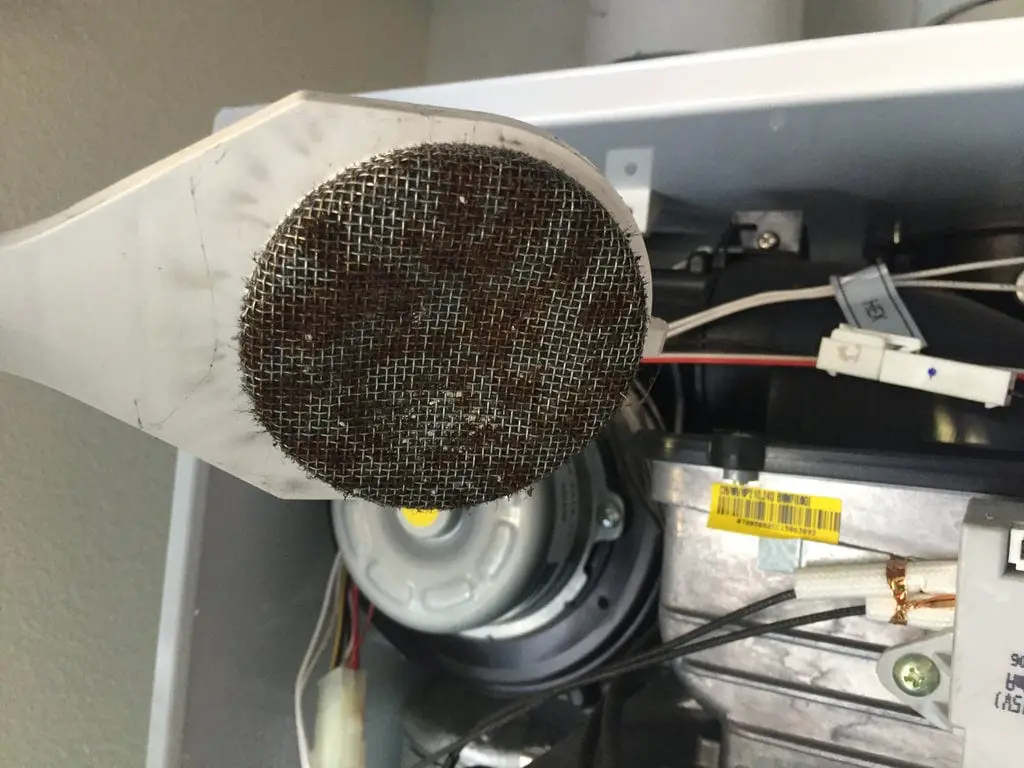
Clean the In-Line Water Filter
Supplies Needed and Difficulty Level
You’ll need spanners, long nose pliers, a soft brush, and thread tape. This operation is relatively easy.
Time and Frequency Required
This operation should take no more than 40 minutes. You should be cleaning this filter at least every six months.
How to Perform This Task
Refer to your user manual to identify the location of the water filter. This will usually be at the inlet point where the water main enters the heater. Isolate the main water supply, and remove the inlet pipe at the heater.
The filter will be inside the heater inlet. Remove the filter carefully, and rinse in warm water. Take care to remove all sediment from the filter screen using a soft brush. Set the filter aside to dry. Reinstall the filter into the heater inlet, then reconnect the main water pipe, and open the valve. The heater is now ready for use.
Descaling Process
Supplies Needed and Difficulty Level
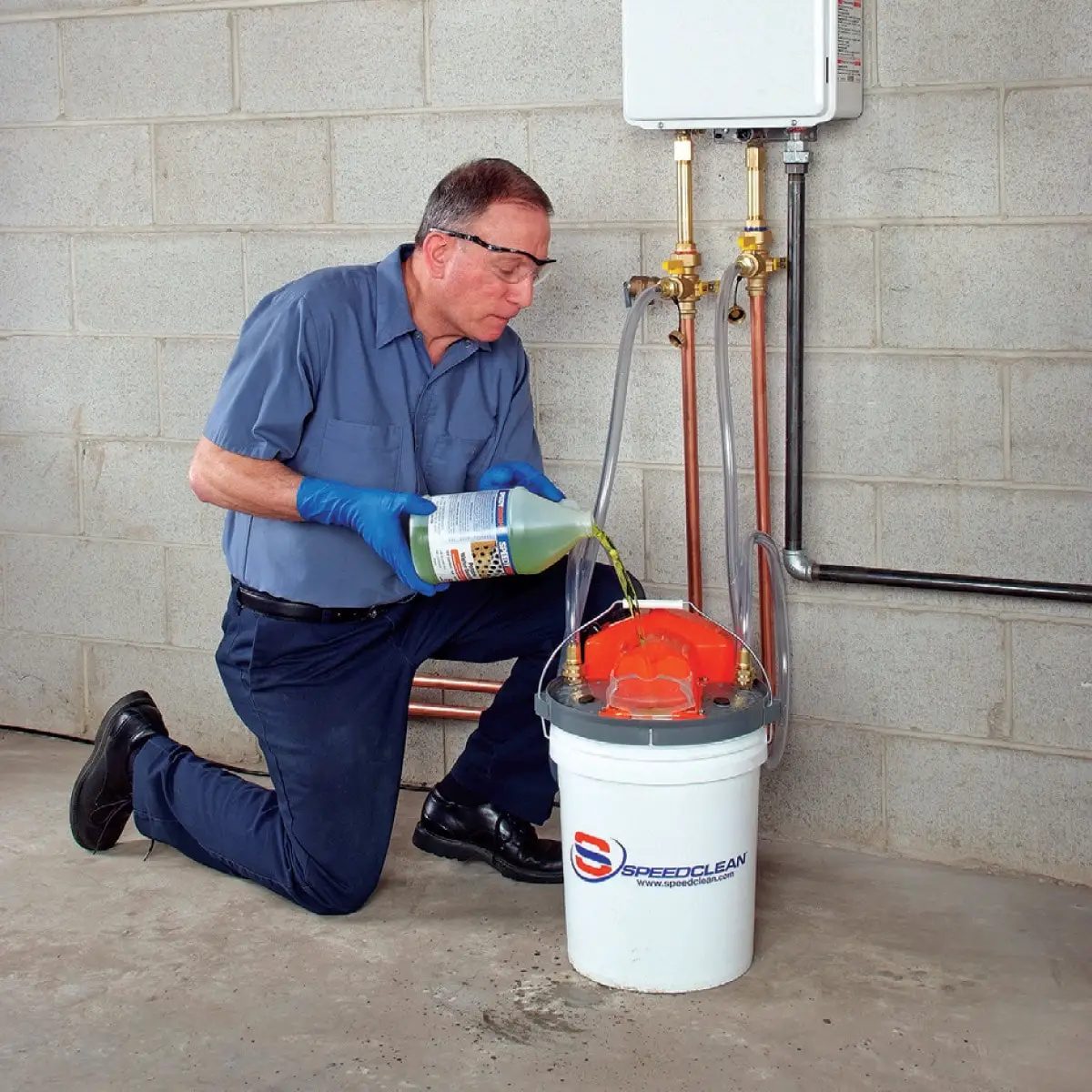
You’ll need a descaling kit, comprising a circulating pump with connecting hoses, approximately 20 liters of descaling agent mixture, spanners, and thread tape. The difficulty level is intermediate.
Time and Frequency Required
This should take no more than two hours to complete. Descaling should be done at least annually or every six months if hard water is present.
How to Perform This Task
Descaling is the process of removing mineral build-up in the pipes running through your heater. Over time, deposits of lime, calcium, and other minerals present in the water will form on the inside surfaces of the pipes. This scale needs to be removed regularly in order for your heater to run efficiently.
If you plan on tackling this task yourself, it may be a good idea to purchase a water heater descaling kit. There are many available, and your manufacturer should be able to recommend one that’s suitable for your heater. Typically, these kits will consist of a circulating pump, hoses, and a supply of descaling agents.
Mix the descaling agent with water, or alternately, mix white vinegar with water. Connect the hoses to the heater as described in the Flushing the System section above. Fill the pump tank with the mixture, then start the pump, and allow the liquid to circulate through the heater until the scale has been removed from the pipes. Once clean, switch off the pump, disconnect the hoses, reconnect the inlet and outlet pipes to the heater, and de-isolate.
Schedule Professional Service
If you don’t want to descale the heater yourself, it’d be advisable to call in a professional to do this for you. They’ll have all the necessary equipment, and of course, they’ll be experienced in this sort of work. Using a professional service also gives you peace of mind, as they should be able to thoroughly inspect your unit and advise on any possible issues.
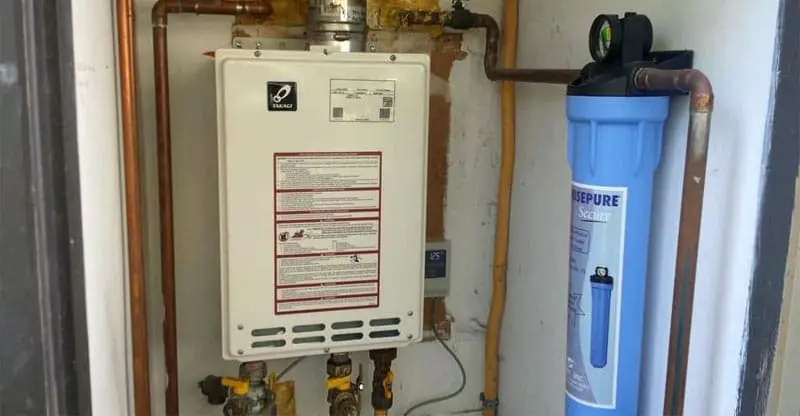
Conclusion
Regular maintenance is crucial to getting the maximum performance and product life from your tankless water heater.
This maintenance costs very little and will go a long way to protecting your investment, as well as saving you money in energy costs.
People Also Ask
Here are a few frequently asked questions about tankless water heater maintenance. We hope you find the answers informative.
You should service a tankless water heater at least every 12 months. With the presence of hard water, this should be done more frequently, say every six months.
If you don’t regularly flush your tankless water heater, you run the risk of severe mineral build-up in the pipes. Over time, this build-up will reduce the efficiency of your heater, as the deposits will absorb a great deal of the heat that’s supposed to be going into the water. These deposits may also narrow the pipes, meaning that water flow is impeded.
Replacement filters are relatively inexpensive. Your air filter is cleanable up to a point, provided it’s handled gently. The in-line water filter should never need replacement unless the screen has been pierced or damaged.
Yes, you do. So-called “hard water” has a higher concentration of minerals than soft or gentle water. This means that deposits will build up faster on the surfaces in your tankless water heater, which, in turn, will require more frequent descaling.
